NJ Teachers of English to Speakers of Other Languages/
NJ Bilingual Educators
ARTICLES-Winter 2022
Call for comments for changes to the Bilingual Education Code
Proposed Changes and Comment Submission Instructions
A Strategy to Accelerate Learning – Peer Tutors
Reflection and Evaluation of a Tutoring Experience
Awards & Scholarships for Your Students
A 2021 Fourth Grade Award Winner: Giovana Cabral
Twelve Things Teachers Can Do to Support ELL Success in the New Year
What Teachers Need to Know About Language
Embracing the Beauty of Multilingualism
Masked Accents and Muffled Sounds: Teaching Behind the Mask
Make It Stick: Speaking Corrections That Stay With Students
Effective Uses of Technology in Elementary School
Favorite Website: Breaking News English
The Substitute Teacher Shortage: Impacts on ELLs and ELL Educators
How To Have Difficult Conversations at Work: 5 Key Steps
The Experience of Serving on the NJTESOL/NJBE Executive Board
January 4, 2022
Call for Comments about Changes to the Bilingual Education Code
 Written Testimony Re: Changes to N.J.A.C. 6A:15 (January 5, 2022 NJ State Board of Education Meeting)
Written Testimony Re: Changes to N.J.A.C. 6A:15 (January 5, 2022 NJ State Board of Education Meeting)
This week NJTESOL/NJBE members on the hotlist received an invitation to participate in an important campaign requesting changes to the Bilingual Education Code which will sunset in February 2023. The process of amending the Code takes approximately a year and there will be several ways for NJTESOL/NJBE members to be involved along the way. The NJTESOL/NJBE Advocacy Subcommittee will continue to keep you updated on how we can collectively advocate for necessary changes.
This call for change begins with submitting written testimony to the New Jersey State Board of Education (NJSBOE), the body that ultimately approves changes to the education code. The written testimony for this month’s meeting must be submitted by January 5th. The more written comments sent to the NJSBOE the better!
We invite you to join us in submitting written comments to the New Jersey State Board of Education (NJSBOE) using the template link here.
This development of the proposed changes to the Bilingual Education Code began in the summer of 2021. New Jersey Teachers of English to Speakers of Other Languages/NJ Bilingual Educators, together with our partners New Jersey Consortium for Immigrant Children (NJCIC) and Education Law Center (ELC), issued a joint report that documents where school districts across New Jersey have fallen short in meeting their obligations under New Jersey’s Bilingual Education Code. The report is grounded in a survey of educators and follow-up interviews and listening sessions with educators, students, and caregivers. Additionally, the report further highlights a lack of sufficient guidance, support, and enforcement from the New Jersey Department of Education, including shortcomings in the Code itself. The report’s observations are corroborated and reinforced by the United States Department of Justice’s recent consent decree with Newark Public Schools, which found “wide-ranging failures to properly serve students learning English” in New Jersey’s largest school district. Moreover, the report strongly suggests that the problems uncovered by USDOJ in Newark are not unique to one school district.
To adequately address the concerns raised in the report, the NJTESOL/NJBE Advocacy Subcommittee asks you to urge the Commissioner, the New Jersey Department of Education, and the New Jersey State Board of Education to make these changes to the Bilingual Education Code:
See below the proposed changes and instructions for submitting your own comments.
Proposed Changes and
Comment Submission Instructions
 1. Develop and institute a formal and transparent compliance and accountability process to ensure that every school district implements the requirements that are already part of the New Jersey Bilingual Education Code (addition to N.J.A.C. 6A:15-1.6(b)).
1. Develop and institute a formal and transparent compliance and accountability process to ensure that every school district implements the requirements that are already part of the New Jersey Bilingual Education Code (addition to N.J.A.C. 6A:15-1.6(b)).
2. Establish a “complaint investigation” system for violations of laws protecting ELs, comparable to that which exists for special education at N.J.A.C. 6A:14-9.2 (addition to N.J.A.C. 6A:15-1.6, or section added to 6A:15).
3. Change language throughout NJDOE documents used at all levels (administrative code, EL entry and exit documents, etc.) to more closely align with current educational research and asset-based perspectives (modifications to N.J.A.C. 6A:15 and other existing NJDOE Code sections, documents, and webpages).
4. Establish a clear and comprehensive definition of language accommodations, including first and target language supports that provide access to content concepts (addition to N.J.A.C. 6A:15-1.2 and 6A:15-1.4(c)).
5. Require language accommodations, including but not limited to language objectives and strategies, in every classroom where ELs are students, in order to provide access to grade-level content as legally required (addition to N.J.A.C. 6A:15-1.4(c )).
6. Facilitate effective delivery of special education, related services, and accommodations for ELs with disabilities (addition to N.J.A.C. 6A:14 and/or 6A:15).
7. Require, as part of districts’ Three-Year Plans, EL-focused professional development for all in-service teachers and teacher candidates, all supervisors and administrators who evaluate these teachers, and all staff members, as ELs are the responsibility of all teachers and staff (modification to N.J.A.C. 6A:15-1.8).
8. Provide students and families access to technology and Internet services with training that is accessible, both linguistically and logistically (addition to N.J.A.C. 6A:15-1.7).
9. Provide essential information and communications from the NJDOE and school districts in a language that LEP parents and caregivers understand and a format that is accessible (addition to N.J.A.C. 6A:15-1.13).
10. Clearly articulate and communicate a pathway to graduation for ELs (addition to N.J.A.C. 6A:15-1.11). This must include correct translation and awarding of credits from non-U.S. transcripts; opportunity to gain credits through an Individualized Student Learning Opportunity (see N.J.A.C. 6A:8-5.1(a)2); appropriate placement in requisite classes; and communication of attendance and credit recovery policies to students, parents, and guardians.
11. Offer linguistically and culturally appropriate mental health and counseling services for ELs (modification to N.J.A.C. 6A:15-1.7(b)).
12. Allocate funds for career pathways and recruitment of bilingual and/or Black, Indigenous, and people of color (BIPOC) educators, mental health professionals, counselors, and administrators who are underrepresented in the New Jersey PK – 12 educational systems (addition to N.J.A.C. 6A:15). NJDOE must invest in the recruitment and training of diverse education professionals who reflect the racial, ethnic, and linguistic demographics of our New Jersey student population.
13. Create clear pathways for ELs to achieve the Seal of Biliteracy (addition to N.J.A.C. 6A:15). By clarifying these pathways, NJDOE can celebrate, affirm, and offer academic recognition for ELs’ full linguistic repertoire.
When using the VoterVoice link to provide written comments it will include two parts:
- a personalized message and
- recommendations for changes to the Bilingual Education Code.
The personalized message may include your role in your school context, any role you may have in NJTESOL/NJBE or other organizations, and why this issue is important to you. Messages that include a personalized comment in the first comment box are most effective. Recommendations for changes by NJTESOL/NJBE, ELC, and NJCIC are included in the body of the message.
We will continue to use VoterVoice this year to bring awareness to this and other issues of relevance to NJTESOL/NJBE members. You will always have the opportunity to opt out of emails if you wish.
NJTESOL/NJBE, NJCIC, and ELC are committed to the creation of equitable educational spaces that promote multilingualism; encourage the use of students’ and families’ full linguistic repertoires; and honor and respect multilingual learners’ and their families’ cultural and linguistic backgrounds, experiences, and knowledge.
Thank you for your advocacy!
NJTESOL/NJBE Advocacy Subcommittee
advocacy@njtesol-njbe.org
January 11, 2023
Are Schools Overlooking an Obvious Strategy They Can Implement Immediately To Accelerate Learning? Peer Tutors!
 By Larry Ferlazzo
By Larry Ferlazzo
In his blog, Ferlazzo describes not only the benefits, but also a “doable strategy” of using peer tutors to help beginner and intermediate students accelerate. The tutors are either former multilingual learners who are advanced or students from his previous Theory of Knowledge classes.
Two of the activities involve students reading to the tutors for comprehension and fluency or practicing the presentations required in Ferlazzo’s classes. The tutors mentor the students, providing them with “social/emotional, as well as academic, support.” In class, Ferlazzo gives a brief lesson followed by a small-group session with the tutors for practice. This sequence often occurs a couple of times in each class.
Ferlazzo also provides general training for the tutors. His training resources are on his blog. They include the guidelines and a video.
See below for the story of a college student tutor.
Service Learning Reflection and Evaluation of a Tutoring Experience
 By Jae Kwon
By Jae Kwon
Once a week, for two hours, I served as an ESL tutor at the ELRC [English Language Resource Center]. In the first two weeks, I was taught the basics of how to conduct a tutoring session, what kind of needs the students may have, and what kind of resources and textbooks we had access to. I learned about the approaches to grammar, pronunciation, reading, speaking, and writing.
Then I started being matched up with students. One student in particular would sign up for sessions with me weekly, even doing two sessions on the same day if I had the availability. She was a former daycare teacher from Korea and had also raised five children of her own. She was looking to study and obtain certification to open up a daycare center of her own in the U.S. As I am also a Korean speaker, she expressed much relief. Not only was the language barrier an issue for her, but the way that she had been educated back in Korea differed from the U.S. system in many ways and made it doubly hard for her to adjust. This was especially evident when it came to writing, as the type of writing as well as the organizational structure of writing taught in Korea is much different from what is taught in the U.S.
I would honestly evaluate this semester as a successful one in both how I was able to help the students I tutored as well as what I learned from the experience. I was able to help the aforementioned student, for instance, not just with her school writing assignments but crafting a 5-year plan for herself in English as well as helping her write an essay about her philosophy on children’s education. Both of these, I hope, will be of help to her as she structures her own ideas and presents them to others in her career. This experience also made realize the importance of cultural awareness and fluency, for my knowledge of Korean culture helped greatly in communicating and helping this student.
Jae Kwon is a student at Bergen Community College. Because the DACA program closed before he was old enough to apply, he cannot be paid for tutoring. Instead, he agreed to volunteer and will receive a service learning endorsement on his diploma.
January 18, 2022
Awards & Scholarships for Your Students
 We are delighted to announce that we now have an additional scholarship which is for graduate students taking courses to become bilingual educators. This complements the Jesse Reppy Memorial Scholarship for graduate students preparing to be ESL teachers.
We are delighted to announce that we now have an additional scholarship which is for graduate students taking courses to become bilingual educators. This complements the Jesse Reppy Memorial Scholarship for graduate students preparing to be ESL teachers.
We invite you to nominate deserving students for one of these awards. For many who are attending or are planning to attend college, the scholarships are essential in helping them pay their tuition.
The application deadline is April 8, 2022. We will honor the scholarship recipients at the 2022 Spring Conference President’s Awards Ceremony which will be held 6:00 pm, June 2, at the Hyatt in New Brunswick.
Two Fourth Grade English Writing Challenges – two English learners who have been in the U.S. 3 years or less – Award: an iPad
Two Eighth Grade English Writing Challenges – two English learners who have been in the U.S. 3 years or less – Award: a touch screen laptop
Two $2,000 Raquel Sinai Newcomer Scholarships – two student in ESL and/or bilingual classes in grade 12 who have been in the U.S. two years or less
Two $2,000 Pedro J. Rodriguez scholarships – ESL/bilingual high school seniors who plan to study in a New Jersey college
Two $2,000 Seal of Biliteracy Scholarships – Two high school seniors who are current or former ESL/bilingual students who received the NJ Seal of Biliteracy in 2021 or will receive it in 2022.
Praxedes León Parent Awards for $500 are given to the parents of the Seal of Biliteracy Scholarship winners
Two $2,000 Higher Education Scholarships – Two ESL/bilingual students enrolled part-time or full-time in a NJ college – presently taking ESL courses
$2,500 Dr. Jessie Reppy Memorial Scholarship – for a graduate student enrolled in an accredited master’s degree program with a major or specialization in teaching English to speakers of other languages
$2,500 Bilingual Educator Scholarship – for a graduate student enrolled in an accredited program with a major or specialization in bilingual/bicultural education
$1000 grant from Judie Haynes for an educator who teaches English learners under difficult conditions. The grant money may be used to purchase materials or provide services.
Scholarship information and forms
See below for a 4th-grade award-winning essay. Others will be featured in coming issues of Weekly Voices.
A 2021 Fourth Grade Award Winner: Giovana Cabral
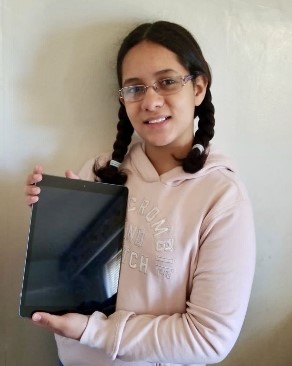 Essay: Did you know that when I was here for the first time I didn’t know any English? When I arrived from Brazil in 2018, I started school. Before I walked into the school on the first day I felt nervous. My teacher and a Portuguese speaking student helped me feel more comfortable. The teacher tried to help me write in English, but it did not work. The boy helped by trying to translate what the teacher was saying.
Essay: Did you know that when I was here for the first time I didn’t know any English? When I arrived from Brazil in 2018, I started school. Before I walked into the school on the first day I felt nervous. My teacher and a Portuguese speaking student helped me feel more comfortable. The teacher tried to help me write in English, but it did not work. The boy helped by trying to translate what the teacher was saying.
I would help a new student in my class. Some things I could do are, at first I could help them know find where is the bathroom, gym etc. in our school building. After that, I could help them know the teachers better. Occasionally, I can point to things and tell them what they are called in English. Then, I can translate what the teacher is saying to the student. Finally, I could help them spell words. As you can see, I can help all the new students that come from other countries.
January 25, 2022
Twelve Things Teachers Can Do to Support ELL Success in the New Year
 By Kristina Robertson
By Kristina Robertson
This article on Colorin Colorado provides a wealth of ideas and resources for teachers of ELLs. The article has been updated with more strategies for Collaboration and Advocacy. You may already be implementing a number of the strategies, but you might find others that you can try.
Each of the ideas is listed as a “Specific and measurable goal.” The author suggests that teachers try one at a time, and after about a month, try another. The methods for accomplishing each are broken down even further to more specific options which are supported by additional articles and brief videos.
- Strategies for Instruction
- Strategies: ELL Family Engagement
- Strategies for Collaboration & Advocacy
- Closing Thoughts
The final videos, Bonus Tips from Kristina, about implementing these ideas are supposed to be for beginning teachers, but they are good reminders for any educator.
Here is the link to the 12 topics.
NJTESOL/NJBE welcomes contributions for Weekly Voices from our readers and would like to hear about the strategies that have worked for you! It could be a strategy that worked for your students or a resource that you have found to be useful. You can write about it in 200-600 words or just send a link to a helpful article.
Send it to voices@njtesol-njbe.org
What Teachers Need to Know About Language
 As I perused the article above, this one caught my attention. I work with college students who are taking ESL classes in reading, writing, grammar, and speech. They often struggle with using connecting words such as before, after, since, however, and therefore correctly. In examining numerous texts, I discovered that generally, sentences are short and these words are absent. Although beginning students might not be able to produce long sentences, they can translate and understand them.
As I perused the article above, this one caught my attention. I work with college students who are taking ESL classes in reading, writing, grammar, and speech. They often struggle with using connecting words such as before, after, since, however, and therefore correctly. In examining numerous texts, I discovered that generally, sentences are short and these words are absent. Although beginning students might not be able to produce long sentences, they can translate and understand them.
This is the authors’ position:
What makes a sentence or a text easy or difficult to understand? Many educators associate simple, short sentences with ease in understanding and interpretation. For that reason, texts that are prepared and selected for English language learners and other students who have trouble reading are often composed of short, choppy sentences. The result is unnatural, incoherent text conveying less substance than regular texts. One teacher described the materials being used with fourth grade ESL students as “first grade materials, very basic it isn’t see Spot run, but it’s close” (Gebhard, 2000). Do greatly simplified materials help or hurt comprehension? Examination of texts that had been modified according to the readability formulas used by textbook publishers found that such texts are often more difficult to interpret (Davison & Kantor, 1982). These texts require the reader to infer meaning relations between sentences because, to make sentences short, words and grammatical structures that show rhetorical or narrative connections between ideas are often eliminated.
Because simplified texts are often unnatural, they cannot serve as exemplars of written academic English. Well-written texts with grade-level appropriate language can give students access to the register of English that is used in academic writing. With teachers’ help, students can use these texts to learn the vocabulary, grammatical structures, phraseology, and rhetorical devices that are associated with that register. Learning to understand and produce academic English is a goal not only for LEP students but for native speakers of English too. But teachers must call students’ attention to how language is used in text in order to support their language development in this domain.
You can find more topics that the author discusses here.
Marilyn Pongracz is the ESL Tutoring Supervisor at Bergen Community College and the Technology Coordinator for NJTESOL/NJBE.
February 1, 2022
Embracing the Beauty of Multilingualism
 By Emma Cooper
By Emma Cooper
This article by a pre-service teacher in the NJEA Review may have caught your attention. Emma Cooper wrote about her experience observing a class in a New Jersey school in which students spoke both Spanish and English and transitioned easily between the two languages. This was novel for her because she had not experienced diversity in the K-12 schools she had attended.
She discovered how knowing the differences between students’ home languages and English can enhance the effectiveness of teaching. She also found that researching students’ cultures, connecting with their families, and becoming familiar with their neighborhoods fosters a better understanding of students and creates a more comfortable classroom environment. She mentioned a few resources that she had used which could help students learn a language such as online and paper dictionaries or apps with voice to text options.
Looking forward to a career in education, Cooper concluded with, “Understanding the beauty of a multilingual student’s approach to thinking through two cultures will allow an educator to create a more understanding, diverse and meaningful learning environment. Ignorance is not bliss in education; let us change this saying to ‘understanding is inclusivity.’”
You can read the full article here.
See below for the essay of one of the 8th grade award winners in 2021.
If I Were a Teacher
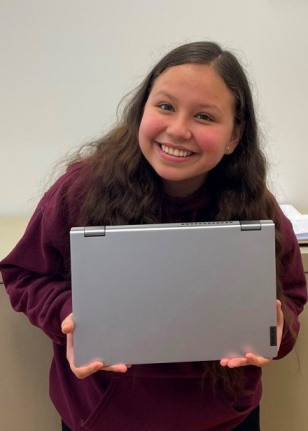
By Helen Martinez Barreto – 8th Grade Writing Challenge Award Winner 2021
What would I do if I were a teacher? Teachers are fundamental parts of children’s growth and development. As children use to spend more time in schools than in their home this can be a really hard question as being a teacher is a really big responsibility and an indispensable role in society. If I were a teacher, I would like to first of all try and make sure that each one of my students feel good and confident with themselves at school. Then, I truly believe that a really important part for an immigrant student even more when they are second language is to join After School projects. Last but not least I would like to encourage respect and inclusion between immigrant and native students.
Making sure that students have good communication with their teachers can create a bond of confidence and safety. If I were a teacher I would love to have that bond with my students. I would like to hold meetings with my immigrant and native students, in which all new immigrant students can tell us about their country, culture, language, etc. So we can help everyone to feel included and create good friendships between students and teachers.
As an immigrant student and also an English learner I can tell by my own experience that an important part of adapting to a new country is language. Language can cause a student to feel left apart if they do not speak the same language. After school helps with all these language barriers. This writer thinks that after school would be a really important and positive way to learn English and get help in all of the areas a new person in this country would need. I would advise you to do not feel bad for not knowing English, that this beautiful country offers us a quality of life, and above all a better education
Being a teacher one of the most important things I would talk about would be bullying. I would talk to my students about how horrible bullying is and how harmful it can be for those who receive it. Respect is the base of all relationships. The school has to be a safe and joyful environment not just for native students but also for immigrants who just arrived in this country.
In a conclusion, if I were a teacher I would share knowledge, provide support, and also invite students to join after school in order to help them better.
February 8, 2022
Minimizing Adult Student Absences through Curriculum Structure, Communication, and Respectful Learning Environments
 Submitted by Jessica Hunsdon, NJTESOL/NJBE Adult Education SIG Representative
Submitted by Jessica Hunsdon, NJTESOL/NJBE Adult Education SIG Representative
The Adult Education Special Interest Group of NJTESOL/NJBE meets bi-monthly with the goal of building a community of adult educators committed to reflecting on our instructional practices, challenging deficit perspectives, and considering new ideas and ways of doing things focused on asset-based approaches. We meet virtually on the 2nd Monday of every other month with our next meeting on Monday, March 14th from 6:00 – 7:00 PM.
In our January meeting, we discussed Then I Stop Coming to School: Understanding Absenteeism in an Adult English as a Second Language Program by Susan L. Schalge and Kay Soga. In this article, Schalge and Soga answer the following questions: What factors prevent learners from attending classes? and How can staff minimize student absences? (152)
Through their research in a beginning ESL class at a community center, the authors learned that teachers and students had conflicting viewpoints on absenteeism. Students described reasons for not coming to class as primarily focused on the instruction/content of the courses, while teachers provided reasons that were external to the course. You can see these summarized in the Jamboard image below. This is important because these differing viewpoints hold keys to considering how we might actively seek out and use student feedback to better understand the need for changes to curriculum and or structures within our own programs.
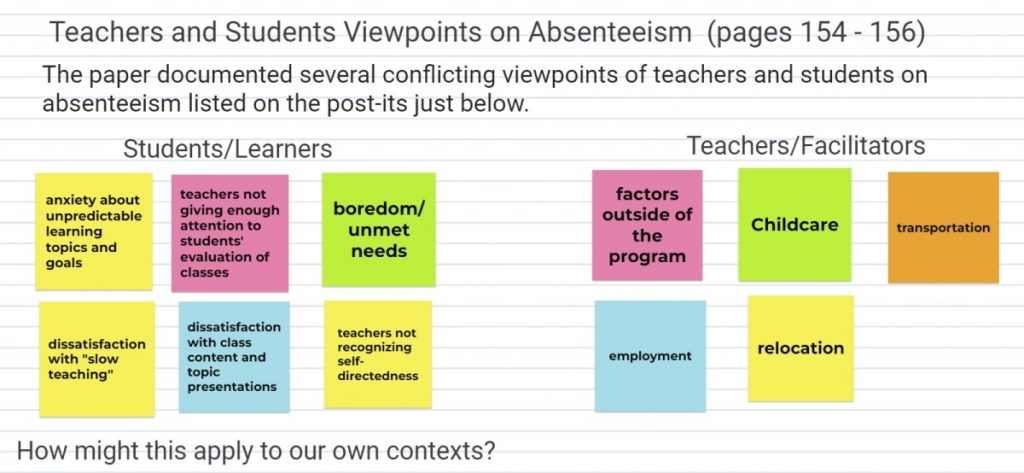
The article also discussed the cycle of absenteeism in adult education programs, especially ones that have open enrollment policies. Many programs are able to improve attendance hours through open enrollment, but the changing student population can pose challenges for teachers to structure curricula (156). This flexibility in curriculum can in turn make it “difficult for learners to keep up or fully comprehend subject matter” because it may be hard to know what is being covered in each class, as well as “understand what they should learn and why.” Not understanding the intentions or expectations of teachers can result in students becoming dissatisfied with classes and eventually no longer attending (157 – 158).
In conclusion, the authors provide several things we can do to address absenteeism. In the area of curriculum structure and communication, we can make curriculum objectives and expected outcomes clearer, provide practical learning goals so that students have a sense of purpose and success, and use evaluation tools to reflect on our teaching as well as clarify future goals. Creating respectful and supporting learning environments is also very important. This includes countering negative assumptions we might have about students’ abilities to comprehend lessons, including learners in curriculum development, and encouraging them to monitor their own learning outcomes (159 – 160).
If you are interested in joining future Adult Education SIG conversations, please feel free to email me. I will make sure that you receive the invitation to the next bi-monthly gathering in March.
February 15, 2022
Masked Accents and Muffled Sounds: Teaching Behind the Mask
 By Nancy Achiaa Frimpong
By Nancy Achiaa Frimpong
Nancy Achiaa Frimpong writes about how the challenges of teaching while wearing a mask have enhanced her strategies “to foster an accent-inclusive classroom.” Frimpong is from Ghana, where she was schooled in British English. So, like everyone, she has an “accent”, but it is different from what her students are accustomed to. She enumerates her four strategies for making students comfortable with their accents:
- Make accents explicit
To do this, she talks about the way she speaks and writes, acknowledging the differences among her students. - Foreground visuals and redundant communication
Frimpong uses PowerPoints, visuals, and texts to provide another avenue of understanding what she says in the classroom. - Work on your own comprehension skills
She uses the media to become familiar with the different ways English is spoken around the world, and while she may ask students to repeat themselves, she does not ask them to try to match their speech to one particular accent. - How to introduce accents in the classroom
For any teacher who might have difficulty introducing the concept of accents, she recommends Trevor Noah’s video “Don’t Lose Your Accent / Learning Accents.”
Frimpong concludes that “Being aware of these differences is important because it creates an opportunity for open dialogue about who we are and our relationship to one another in the classroom.”
Make It Stick: Speaking Corrections That Stay With Students
 By Alice Llanos and Amy Tate
By Alice Llanos and Amy Tate
The authors write about the when and how of feedback, but the main point is how to help students remember and use it. They first list Correction Considerations.
- HOW Will We Correct Them?
The feedback depends on the type of error, but if reformulation is used, students must be made aware that this is a correction. - WHEN Will We Correct Them?
This should be dictated by the type and goal of the activity. Conversations should not be interrupted, but if the goal is a specific structure, the immediate feedback is the most effective. - WHAT Will We Correct?
This has to be determined by what is most beneficial. Vocabulary and pronunciation are most likely to impede communication. - HOW MUCH Will We Correct?
While there are times when corrective feedback is not appropriate, the authors suggest that more is the best.
What follows are three activities which Llanos and Tate use to give the students opportunities to practice the corrections so that they stick.
- Students discuss a topic in pairs or small groups, and the teacher makes a list of common errors. After the teacher talks about the errors and corrections, the students each record themselves summarizing what they discussed in their groups
- Students record five-minute conversations about any topic with a partner. Then they listen and make notes of common mistakes. In the next class, the teacher talks about the errors and after which the students listen to correct themselves. They then have a conversation with a new partner in order to apply the corrections.
- The authors have students record themselves as they practice the targeted language in a discussion with a partner and then listen to themselves and keep a checklist of their correct usage. The activity is repeated with a different partner.
Following these recommendations, Llanos and Tate have found that “In all these activities, students get a second chance to complete a task after some type of corrective feedback. This ensures that the feedback isn’t placed on a back shelf of the mind or in the trash can, but is used immediately after being received, for a chance to make it stick.”
February 22, 2022
Effective Uses of Technology in Elementary School
 By Avra Robinson
By Avra Robinson
Avra Robinson writes that, “Minimizing screen time and maximizing student interactions are worthwhile, but there are still good uses of technology in the elementary grades.” She offers three suggestions for using technology to help students learn better. Although her focus is the elementary classroom, these recommendations could have broader applications.
The first is creating short videos or audio recordings that students can use to review concepts or instructions when they are working alone or in groups.
The second is self-reflection either on the process for completing a project or on study strategies. Robinson gives examples of questions to guide students in this process, which can be ongoing throughout the year.
Finally, she shares options for creativity such as comic strips, timelines, digital posters and much more. She includes a list of sites for producing these.
Robinson’s final caveat is, “When using technology in the elementary classroom, be judicious and intentional. Before implementing it, consider your goals for using it and whether it provides a functional improvement to a learning task.”
You can discover the details here.
Favorite Website: Breaking News English
 Breaking News English, created by Sean Banville, is a website that I keep coming back to for extra practice for my students.
Breaking News English, created by Sean Banville, is a website that I keep coming back to for extra practice for my students.
Two new articles, mostly from the news, are added weekly. One topic has four versions of the same article for Levels 0 -3, and the other has three versions for Levels 4-6. Each version consists of two paragraphs, the vocabulary and length of which increase with each level. The topics are appropriate for upper elementary through adults. Some, like It Snowed Chocolate in a Swiss Town or Turtle’s Walk Delays Planes at Tokyo Airport, are fun.
Online activities include listening at five different speeds, spelling, dictation, word pairs, gap fill exercises, and more. What has caught my attention are the Jumbles. Sentences in the articles are broken up, but not at the periods. Students have to focus on the language as they reorder the article considering what grammar and vocabulary logically comes next.
Additional printable reading comprehension, vocabulary practice, and discussion activities accompany each article. You can search for topics from the 5,268 lessons on the index. Although there are ads, the site is free.
Marilyn Pongracz is the Technology Coordinator for NJTESOL/NJBE and the English Language Resource Center Supervisor at Bergen Community College.
March 1, 2022
The Substitute Teacher Shortage: Impacts on ELLs and ELL Educators
 By Diane Staehr Fenner
By Diane Staehr Fenner
An issue that has come up on the hotlist recently is teachers being pulled away from servicing their multilingual learners because of a lack of substitutes.
In November, 2021, ColorinColorado conducted an anonymous survey of educators. Almost 100 teachers responded, 80% of whom are ESL teachers. They asked Dr. Diane Staehr Fenner to write about the results of the survey. She details the problem, but also provides solutions.
The responses delineated the scope of the problem.
“More than 60% of respondents stated that they were being pulled from their assigned classes to cover others’ classes due to not having enough substitute teachers in their school. Of those who responded that they were covering other teachers’ classes, more than half shared that they were covering classes less than 25% of their time, and twenty percent responded they were spending 25-50% of their time covering their colleagues’ classes. A very small number said that they were covering classes 50% or more of their time.”
From the survey, teachers reported that students are impacted because of
- A decrease in ESL instruction
- Inconsistent teaching and little language support in the classroom
- Resulting in confusion and stress
Here are some of the ways the substitute shortage has impacted ESL teachers.
- Less time for teaching their students
- Less time for planning and collaboration for co-teaching
- Avoiding being absent
- Stress, low morale, and burn-out
- The concerns about equity
“One teacher wrote, ‘When we are pulled, it feels as if our roles are less valued than other teachers and that our students’ needs are not an educational priority.’ Another wrote, ‘(I am) feeling stressed about not advocating enough and that language needs don’t hold high value in the district. Words and actions don’t match.’”
To address the situation, Staehr Fenner offers six steps that can be taken to address this issue.
- Document the details of substitute assignments
- Collaborate with your union
- Find out what school and district policies affect decisions about staffing
- Knowing what the school’s legal obligations are
- Brainstorming solutions
- Meeting with administrators
Staehr Fenner advises that even if administrators resist, it is important to keep documenting the situation, look for others to help, and not give up.
Here’s the link to find out more about what you can do.
How To Have Difficult Conversations at Work: 5 Key Steps
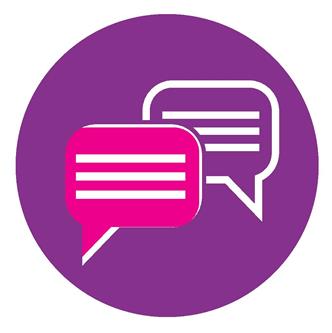 By Erin Eatough, PhD
By Erin Eatough, PhD
If you are experiencing the situation above or any difficult situation at work, this article from BetterUp offers helpful advice for having difficult conversations. It’s a quick, easy read that speaks to every issue with encouragement for every step. The author acknowledges that most of us try to avoid conflicts, but doing so can cause additional problems. She states that the first goal should be understanding rather than finding a solution. Then, preparation for the conversation involves empathy and awareness of your own feelings.
Here are the five steps that Eatough recommends.
- Consider the situation from the other person’s perspective.
- Have a goal in mind, but be flexible.
- Listen closely for understanding.
- Take care of yourself, and take a break if needed and continue the conversation later.
- Brainstorm solutions together.
The article also offers advice on what to do to be able to continue communicating after having the conversation.
You can read the complete guide here.
March 8, 2022
The Experience of Serving on the NJTESOL/NJBE Executive Board
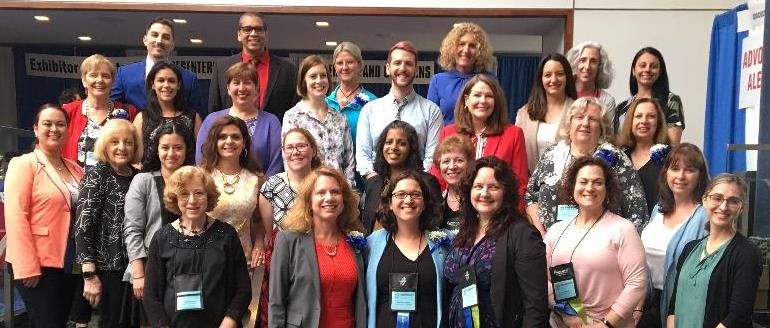
Spring Conference 2019
LeighAnn Matthews, Liaison
Getting involved with NJTESOL/NJBE and joining the executive board was game changing for me as a person and professional. I started my journey as the Bilingual/ESL early childhood/PreK-K representative when I was teaching ESL in a K-5 position, with a passion for early childhood. I was already interested in that particular sub-group of multilingual learners, so I enjoyed sharing a brief update at meetings about a relevant article I saw on Twitter or the news.
I didn’t consider myself an expert – I just liked learning and collaborating with others! Not only did joining the board help me start to gain confidence, but it also helped me create a learning network of like minded, passionate, educators in NJ and beyond. Attending meetings also helped me stay up to date on best practices, advocacy, and mandates/code which helped me immediately in my teaching role. I didn’t feel as isolated anymore; I felt completely connected and supported. This organization means the world to me, and I look forward to continuing to grow and meet other educators in our field.
Jessica Hunsdon, Adult Education SIG Representative
As a newer member of the board, I have had the pleasure to serve on both the Advocacy and Countering Anti-Black Racism Committees. It is through this committee involvement that I’ve realized how critical it is that our Executive Board mirrors the racial, ethnic, cultural and linguistic diversity of the students and families that we serve in our various contexts. Additionally, it is important that we have new voices in our organization with innovative and critical perspectives that push us forward and challenge us to grow and think in new ways.
Luigina Finneran, Middle School/ Bilingual SIG Representative
As a first time member, I wasn’t sure what to expect; however, the process has been both educational and rewarding. The one thing that has been at the heart of many conversations this year has been how COVID has affected all teachers- but especially new teachers. Because of the pandemic, many educators did not get the “traditional” experience and we are now seeing the results of this. In my role, I have addressed these needs of my SIG by providing assistance with everything from where to find PD, lesson planning and even creating collegial visits for teachers to learn from other teachers. In this role, I want everyone to know that they are not alone and people are here to help!
Maria Jaume, Treasurer
Being an executive board member has given me a way to connect with colleagues throughout the state. It’s been a great experience to network with other educators and share ideas. I also get first hand experience with what it is like to build the Spring Conference from scratch each year, and I get insight to what will be presented and what the hot topics are statewide. It’s a satisfying feeling to be a part of an organization that makes a difference in education.
We Invite You To Get Involved
If you would like to become a member of the Executive Board, you can nominate yourself. There are only two requirements: to be teaching in the field you are seeking to represent and to have been a member of NJTESOL/NJBE for at least one year.
The term is two years with the option of running again to serve an additional two years for the same position. Each year, alternate positions are open.
 This year the open positions are for:
This year the open positions are for:
Vice-President
Special Interest Group [S.I.G.] Representatives
Bilingual Elementary Education
Bilingual Secondary Education
Teacher Education
Adult Education
Supervisors
When you serve, you join a group of like-minded educators from whom you will learn, and with whom you will be able to contribute to others.
You can find all of the information here.
March 15, 2022
Which Words Do I Teach and How?
By David Liben
In answering this question, David Liben offers this advice.
“Words that can be quickly explained should be explained in the moment of encounter. This often includes concrete words, words with single meanings, and words reflecting meaning or shades of meaning that are part of the students’ experiences. The explanation will enhance and not impede comprehension because it was swift and unobtrusive (Biemiller 2010). Words that need more explanation will ideally be taught in context, and then reinforced after, as these explanations will be more elaborate and time-consuming (Beck McKeown and Kucan 2007, Biemiller 2007). This includes words that are abstract, words with multiple related meanings, and words reflecting meanings or shades of meaning that are likely not part of the students’ experience.”
 He is referring to academic vocabulary which is not used in everyday conversation and is not subject specific. When students do not understand this vocabulary, they are not able to grasp the meaning of passages. They may recognize the word, but not realize that it has a meaning that is different from the one they know.
He is referring to academic vocabulary which is not used in everyday conversation and is not subject specific. When students do not understand this vocabulary, they are not able to grasp the meaning of passages. They may recognize the word, but not realize that it has a meaning that is different from the one they know.
Related to this article is a free website, Academic Word Finder, which identifies academic vocabulary in a text. The teacher can copy and paste the text into the site, choose the grade level, and get color-coded results of words below, on, or above grade level. The results show the grade range, parts of speech, definitions, and sample sentences. For some words, there are a few obscure definitions, but teachers can easily choose which ones they will use.
Registration is required, but Academic Word Finder is free.
You can find out more in this article, Which Words Do I Teach and How? and the article it was linked from, Including Tier 2 Vocabulary Instruction in Curricular Materials
You can also find great practical strategies for building academic vocabulary in the NJTESOL/NJBE Voices Journal
Look below for the full list of articles in the 2022 Voices Journal.
2022 Annual Voices Journal
Read with Me – Tina Kern
The benefits and challenges of reading aloud in the ESL/Bilingual classroom and strategies for a successful read aloud program.
Translanguaging Fosters a Framework of Sustainable Cultural Practices in Communities of Color – Pedro Trivella
Considerations on the pivotal role translanguaging has on inclusivity and equity in language while creating cross-cultural connections among English Language learners.
A Place for Everyone: Inclusion for Multilingual Learners – Dr. Denise Furlong
Inclusion for Multilingual learners in mainstream classrooms is essential for students to learn grade level content and achieve academic success; suggested guidelines and implementation practices.
Alternatives to Editing Exercises – Marilyn Pongracz
Implications of using traditional editing exercises in English as a Second Language college classrooms and recommendations for more productive practice supporting English language acquisition.
ELs Require Tier 2 Vocabulary Instruction to Unlock Content Area Learning – Mary K Mansfield
Focusing on the key to content learning, tier 2 vocabulary is the responsibility of all educators, not just ESL/Bilingual teachers. Practices to share with mainstream and content teachers to achieve the shared educational construct of the WIDA English Language Development Standards Framework, 2020 Edition.
Reflections Learned Through Trauma to Better Support Emergent Learners – Scot Burkholder
An educator’s personal experience with hearing loss creates a space for reflection on educational practices with students and their families.
Announcements from Weekly Voices Winter 2022
Somerset/Hunterdon County Chapter meeting virtually Wednesday January 19, 4:30, Co-teaching and collaboration with ESL and Gen.ed teachers
Bergen County Chapter online workshop January 20, 4:30, Resources Galore: Supporting Instruction (and Everything Else!) led by Emily Rosenblum.
Mercer County Chapter virtual meeting January 20, 6:00 pm. Network, Share ideas, Learn together. NJTESOL-NJBE Vice President, Michelle Land, will be doing a presentation about the WIDA standards.
NJTESOL/NJBE Virtual Parent Expo 2 – Padres con Poder/Parent Power, January 22nd.
Passaic County Chapter – Virtual meeting January 27th, 4:30pm – 5:30pm, Collaborating with Your Schools Licensed Speech Pathologist.
Scholarships and Awards – It’s never too soon to get started! Encourage your students to apply for the awards and scholarships offered by NJTESOL/NJBE. Here is the link to the information and applications.
An overview of the 2020 WIDA Standards Framework with NJTESOL/NJBE, February 5, 2022, 9:00-12:00. Join us for discussions on how to implement them in your classroom.
Passaic County Chapter monthly meeting: App Smashing with Pixton EDU and Screencastify – Thursday, February 17, 2022, 4:30-5:30pm, PD Certificate available
Spring Conference early registration through March 4th. Don’t miss the discount!
The NJ Consortium for Immigrant Children, Education Law Center & NJTESOL/NJBE Using Federal Anti-Discrimination Laws to Protect English Learners Free Webinar, Wednesday, March 9, 2022 at 4:30 PM
Looking at and Learning about the WIDA 2020 Standards Framework with NJTESOL/NJBE Sat, March 12, 2022 9 am – 12 pm, online.
Nominations for the NJTESOL/NJBE Executive Board – You can nominate a colleague or yourself.
Passaic County Chapter – You are invited to our virtual monthly meeting: RE-engaging your ELLs with Susan Mola – Thursday, March 17, 2022, 4:30-5:30pm. PD Certificate available
Middlesex County Chapter – We would like to invite you to our first meeting!
Middlesex County Virtual Meet Up, Friday, March 25, 2022, 4:30-5:30pm, PD Certificates available
Scholarships and Awards for your students – Encourage them to apply now.
The deadline is April 8th!
 Visit our home page for links to past and present Voices issues.
Visit our home page for links to past and present Voices issues.

